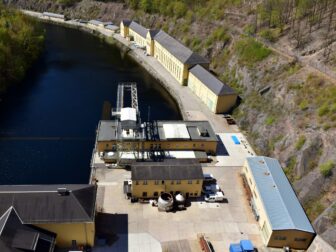Tag - water management iot
Revolutionizing Water Conservation: IoT Solutions for Effective Water Management
Revolutionizing Water Conservation: IoT Solutions for Effective Water Management
Water is one of our most precious resources, and managing it effectively is critical both for the environment and for sustaining human activities. With the rise in population and the effects of climate change becoming increasingly noticeable, efficient water management has become a matter of urgency. This is where the Internet of Things (IoT) comes into play, offering innovative solutions to manage water resources more effectively and sustainably.
IoT technology involves the interconnection of physical devices through the internet, allowing them to send and receive data. In the field of water management, IoT devices can be embedded in various parts of the water infrastructure, such as pipes, meters, water sources, and treatment plants. These devices collect data on water quality, consumption, and flow rates, providing a comprehensive understanding of water usage patterns and system performance.
One of the primary benefits of IoT in water management is leak detection and prevention. Water distribution systems are prone to leaks, which can waste significant amounts of water before they are even detected. With IoT sensors, leaks can be identified in real-time, allowing for prompt repairs and minimizing water loss. These sensors can also predict potential weak spots in the system, enabling preventative maintenance and reducing the risk of future leaks.
Another significant application of IoT in water management is in irrigation systems. Smart irrigation uses weather forecasts, soil moisture data, and plant water requirements to determine the optimal amount of water needed for agricultural fields. This precision in water application not only conserves water but also enhances crop yields and reduces the environmental impact of farming practices.
Moreover, IoT technology is instrumental in improving water quality monitoring. By continuously measuring parameters such as pH, turbidity, and contamination levels, IoT devices can ensure that water sources remain safe for human consumption and ecological balance. Alerts can be generated if the quality drops below certain thresholds, allowing for swift action to address any issues.
Smart metering is another area where IoT shines. These meters provide detailed insights into consumer water usage, encouraging conservation by giving consumers real-time feedback and identifying high-usage periods. Water utility companies can use this data for dynamic pricing models, which can help to flatten peak demand and balance the load on the water supply system.
Furthermore, IoT can play a role in disaster management related to water. Flood sensors can provide early warnings to communities at risk of flooding, enabling better preparedness and response. Similarly, IoT devices can monitor water levels in dams and rivers, providing valuable data to predict and mitigate the impact of droughts and floods.
Implementing IoT in water management also poses challenges, such as ensuring the security of the vast amounts of data being transmitted and dealing with the interoperability of different devices and systems. Additionally, there is the need for significant investment in infrastructure and training for utility personnel to adapt to new technologies.
In conclusion, IoT is a powerful tool that holds the potential to transform water management. By enabling more precise control over water resources and providing real-time data, IoT can help address some of the most pressing water-related challenges we face today. As technology advances and becomes more accessible, we can expect IoT to play an even more prominent role in ensuring the sustainability and security of our water supplies for generations to come.
